One of the great overlooked virtues of filling our lives with apps is the ease of using any API-equipped public transportation system. Yes, there will be times when having a car parked next to your white picket fence is the best way of picking up the kids from four different locations, and bring them home early enough to start cooking dinner before your wife comes home. Mostly, though, a bike, a bus, a train and a tram will do the job of urban transportation with a fraction of the pollution.
But my self-righteousness was ill-earned, since I’d burned my fair share of carbon the day before, flying from one ocean to another. Plus, because of its density, Manhattan, where I was coming from, is best addressed by public transport, whereas now in Portland, even with its streetcar, bus and light rail, if I got a call from Tears For Fears telling me they had a window of opportunity to talk to me, I’d jump straight into a gas-guzzling taxi without a second thought.
But, despite my regular swiping and poking of my iPhone, no email, text or voicemail from any of the flacks had appeared since the night before.
The cheap hotel I was leaving early on Saturday morning was in the middle of a standard airport scrubland. Low slung warehouses and nondescript offices of importers and airline caterers were spaced out along curling highway on-ramps fringed with weedy hope. To my surprise, these roads-to-roads all had at least one pedestrian pavement, and I could follow the arabesque google-mapped route to the 72 bus stop simply and safely.
According to both Google and Portland’s TriMet website, either of two scheduled number 72 buses would get me to brunch at Sweedeedee by 8.45am (11.45am New York time). “To beat the rush,” I joked to myself, wondering what sort of person would drag themselves out of bed that early on a weekend. I arrived at the stop just as the app said the earlier one should be arriving. And there it was, waiting at the traffic lights to turn and take me from the PDX transitional wasteland through the bohemian corridor of Alberta Street, to a residential North West neighbourhood barely a couple miles north of last night’s dinner venue, Ned Ludd.
I hadn’t heard from Curt’s manager but I didn’t want to piss him off by sending a reminder email. On the bus, I wrote an email to first agent who had initially been “unable to accommodate” my request for an interview. I let her know I was around and available. “Am in Portland, specifically to see TFF and am available anytime to speak to them. Either email me or call/text at this number…”

Salted cheese is so sharp. It cuts the senses. Hard dairy fat and salt are not the healthiest of natural ingredients, but rather than banning them, let’s use them well in moderation. Alcohol is a poison, but also a joy. The puritanical outlawing of this particular white crystal comes from the abuse of salt, not from its use. Through modern methods of processing, obscene amounts of salt are abusively crammed alongside sugar into factory foods. The backlash made me doubt even a sprinkling of crystal salt on locally matured cheddar cheese. Doubt only for a second, though, you will be relieved to hear.
Even so, the spiky Grafton cheddar I ate for breakfast at Sweedeedee was perhaps the least delightful of the delightful items arrayed before me for breakfast. (Let us, by the way — and in the interests of civilization and linguistic propriety — agree not to call a meal completed before 9am a brunch.) That breakfast still life: Locally grown pears, local free-range eggs, homemade bread (fried, the only excessive luxury,) greens with a light dressing, and delicious home made compote jam. I began and ended with a Genmai tea: Already anxious enough about either hearing or not hearing about my interview, I didn’t need to throw acid coffee on my travel-churned stomach. There would be plenty of time for locally curated and roasted coffee.
All the dishes were presented with an insouciant homespun touch — food-laden mismatched homemade pots and plates were distributed as Johnny Cash LPs span at 33rpm on the record player, and the line out the door gaggled onto the street. My belly filled, my sense of well-being swelled ,and my soul was refreshed. I was set up for the day for the price of a generic veggie omelette and Lipton’s tea in New York. No wonder couples and families were prepared to wait outside this neighbourhood eatery at 8.30 on a Saturday morning. To my surprise, there had actually been a rush and I had kind of beaten it, but not through my app-powered bus-riding. Rather, because I was alone and could take a solo window seat.
Tears For Fears take their name — and the concept for the album The Hurting — from Arthur Janov’s theory of Primal Scream Therapy. Although largely disregarded now, Janov’s vision of empowering the mind to conquer adult suffering buried deep in childhood experiences was seductive in 1970 when he wrote The Primal Scream. It was still attractive in 1980 when he wrote Prisoners of Pain — a book that, when they chanced upon it and read it, appealed to the teenage Curt and Roland growing up in Bath.
Whether therapeutic or not, finding, re-experiencing and exorcising formative traumas has proven a powerful artistic source. John Lennon underwent a crucial, though curtailed, few months of therapy with Janov before his first solo album, John Lennon/Plastic Ono Band in 1970. And The Hurting not only takes titles from chapters in Janov’s book, but also, in its lyrics, seems to confront the duo’s traumas. The title track pleads, “Could you ease my load? / Could you see my pain? /Could you please explain the hurting?” and track two, “Mad World,” famously notes that the “dreams in which I’m dying are the best I’ve ever had.”

One interview I’d read said that Curt and Roland had left their ska band The Graduate to form Tears For Fears because they wanted to fund their own primal therapy and, as musicians, thought to make that money through selling records. Ironically, their success in becoming famous and busy musicians meant they had money, but no time, for therapy. Another interview suggested that Roland had actually, later, gone through a course of therapy, so I wanted to know more about what that entailed. Though I owned copies of the two Janov books, I thought there might be more reading to do about the therapy, and that was enough of a flimsy excuse to go to Powell’s City of Books, so I hopped onto the number 4 bus to downtown.
On the way to Powell’s, the driver announced that we would have a two and a half minute break to bring the bus back onto schedule. That time he spent, not coincidentally, smoking a cigarette while looking across the Steel and Broadway bridges over the Willamette River. It had been almost 9 years since my sister-in-law’s sister had given me my Powell’s T-shirt, and almost 10 years since Portland won my heart by headlining a glossy multipage “Visit Portland” insert in The New Yorker ,with Powell’s on its front page. It’s my kind of town that puts its money where its mouth is, to acknowledge that a new and used bookstore is the reason tourists might visit.
Visiting Powell’s occasioned no fears, or tears. Going in the front door was like greeting an old friend who I’d just happened to never have met before. Like a new store-bought suit that just fits, or a caught ball that nestles solidly in the palm, it was new, but felt familiar. The shabbiness of the old sign surprised me as I approached, but it seemed to be preserved out of fondness and nostalgia, as the inside of the shop was modern and fresh with new shelving.
Reflections on my short time in Powell’s that morning and the following morning could fill a volume which could be published, sold from its own august shelves read, returned and profitably re-sold from neighbouring ones. Suffice it to say that the currency of thought is words and the objects that embody human culture are books. Once the frame is removed and words become part of the flow of mere information, culture is in gross danger of losing its quality. Powell’s — along with New York’s The Strand, my local Book Culture, San Francisco’s City Lights, and a few others across America — are redoubts of local quality.

My reveries were interrupted by a vibrating alert from my phone. Could it be one of the PR folk? Could it be Curt? “Hello? Hello!”
It turned out to only be a mass press mailing from PR Mike at the festival to clarify when and where the PR tent would open but, though the band was surely not going to be at the Pabst Project for many hours yet, I felt that I needed to get moving into position. Although I had no real power to make the interview happen, I at least needed to maximize my opportunity — as well as my own illusion of control which, up until now, had come mostly from choosing where to eat.
First though, I needed a boost. Just as England is not a great tea-growing nation, Portland does not draw its coffee fame from its farming ability. When I lived there, certainly, local tea artisans around London were not drying and mixing carefully sourced tea leaves, but that seems to be what’s happened around Portland. Roasting, sourcing, mixing and then drinking coffees has made the Pacific Northwest famous. Around the corner from the city’s flagship bookstore are a number of coffee shops, including Courier Coffee, a tiny, two-table coffee shop that is, in its own way, defining of Portland.
Courier’s physical space runs sideways along Oak Street, which itself takes the diagonal across the city’s grid. Squeezed into a shallow footprint, the barista’s counter takes pride of place, with two small flimsy white tables to one side almost an afterthought. I set up at one of them, to write some questions for the interview. The barista was slight, bearded and had one of the ubiquitous wooly hats on despite the relative warmth of the day. Apart from to-go cups, there was almost no paper in the place, certainly none for filtering. Jars of beans and mechanical contraptions cluttered up the counter leaving scant space for service or conversation.
I put my locally roasted coffee from El Salvador next to a fluffy yoghurt muffin with Asian pear, and started to structure questions that would allow me to understand more about the development of The Hurting, without ignoring the more recent work, like Curt’s solo album Deceptively Heavy, or Roland’s surprisingly readable novel, Sex, Drugs & Opera: There’s Life After Rock ‘n’ Roll. I wanted to be the brightest, most upbeat interviewer they’d ever met, but in a knowledgeable, middle-aged, worldly way. Nothing sounds quite so much like “I think you’re past it,” as “I loved your early work.”
But I was distracted from my work by the conversation between the short, quieter barista in the hat, who had helped me choose a coffee and the louder, newer one who was just starting. The principle being discussed — somehow related to the concept of post-ironic greaser-themed chic — was the relationship of baristas to the tools of their trade. Maybe the conversation arose out of a remark about See See Motor Coffee, a motorbike and coffee enthusiast location a few miles from the centre of town. Mostly what I grasped of the commonality between greasers and baristas was that whatever their aesthetics or product, they needed to be able, at least theoretically, to strip down their equipment and put it back together again.
It seems a laudable aspiration for any business. As a writer, I’m fragile. One wonky chip or glitchy line of code and I’m reaching for tech support. The advantage of knowing your supply lines and being, literally, in control of the means of production, is that you are serving a known quality. It’s the beauty of the maker movement and the drive behind the new food movement. Do what you know. Know what you eat.
I took the streetcar to the new development on the south waterfront where the Project would to take place. I realized how new it was because no one in Portland knew where it was or how to get there. Fortunately there was a streetcar line joining Powell’s to Pabst — there’s an app for that.
I walked into the Project, which resembled nothing so much as a cloudy parking lot. In the middle a giant silver unicorn reared at the sky as the over-21s stuck beer poses at its genital height. The press tent was empty. K. Flay was preaching to the small group of early arrivals. Her lesson for the day: “I was sucking on a bottle of Jim Beam and wishing it was you.” It was a good set, but must have reminded her of her days at Stanford, especially if she played to a lot of empty parking lots in the Bay Area. She necked a PBR, the sparse crowd whooped and necked in response.
My weather app had spent all morning updating itself to prolong the clouds that were supposed to have dispelled on Friday. Finally, with K. Flay all in black, singing about breakups to a very small group of Portlandians, the sun came out.
Part 1 can be found here.
Part 3 can be found here.
Photographs courtesy of Sean Dreilinger, Steve, Richard Loyal French, and rachaelvoorhees. Published under a Creative Commons license.
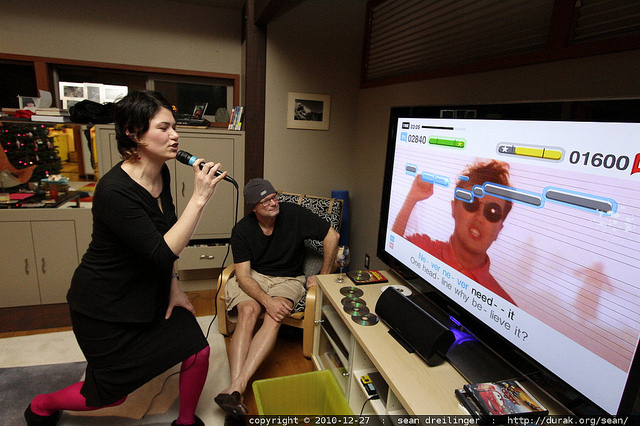
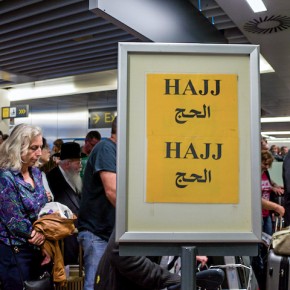
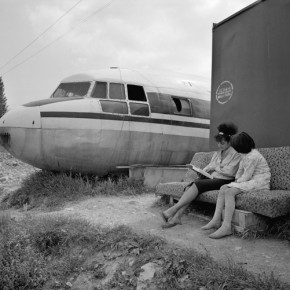
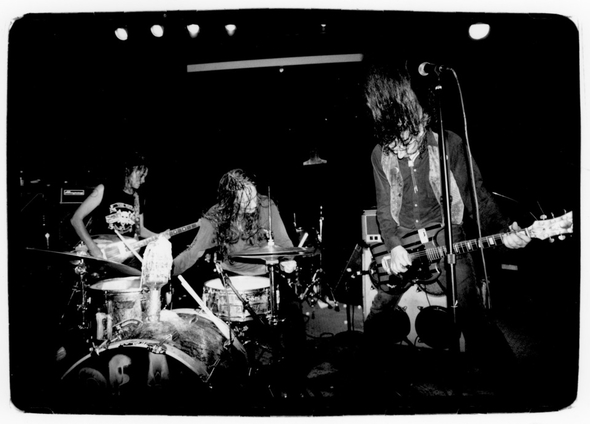
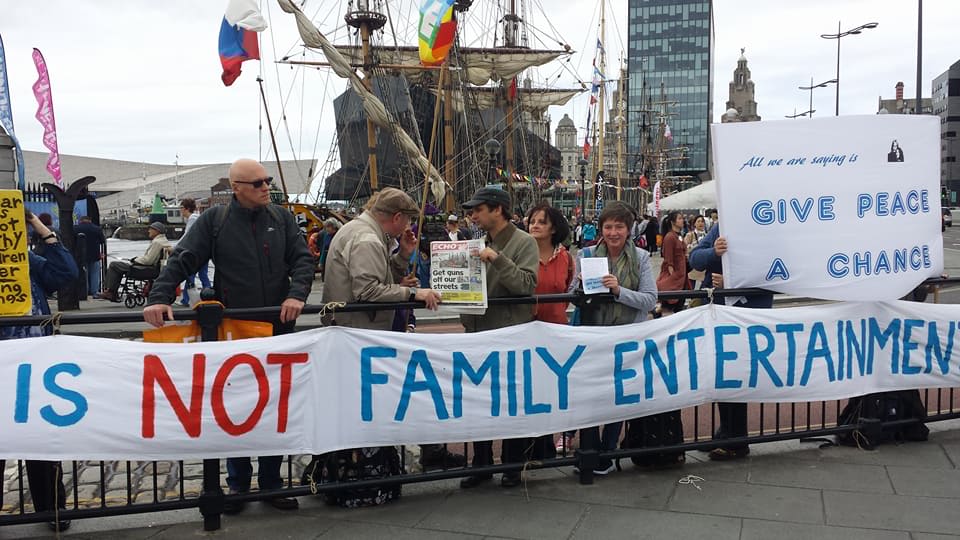
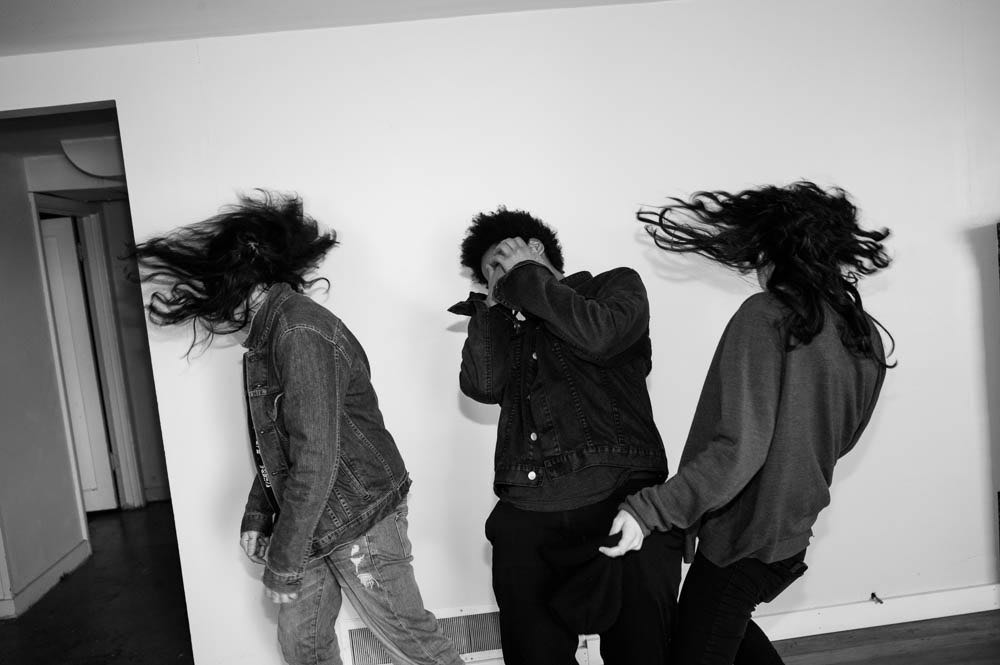
1 comment